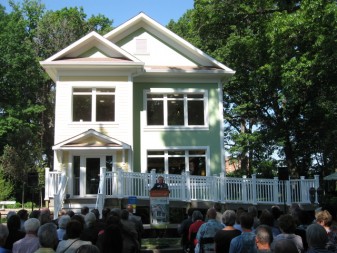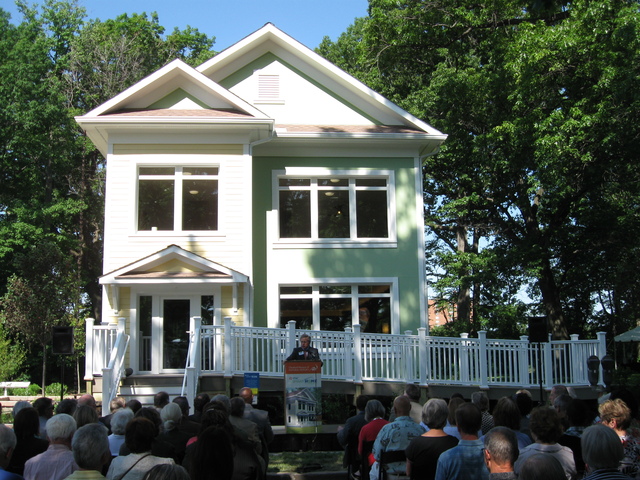
Reduce, reuse, and recycle. We’ve heard it. Some people practice it. But as energy and other natural resources become harder to obtain and conserve, more people are looking toward solutions for a sustainable future. SmartHome Cleveland, first located at the Cleveland Museum of Natural History, was designed to create a vision for some sustainable technologies and practices that are available right now to people who are thinking about building or renovating their homes.
One of the biggest challenges in our country is to conserve our energy supply. Energy, usually starting in the form of natural gas or other fossil fuels, is burned or converted to electricity to supply heating, cooling, illumination, and other household conveniences. It is estimated that an average home wastes about 30% of the energy used for heating and cooling due to poor household insulation. The U. S. Department of Energy estimates an annual cost of about $1,900 per household in lost energy savings. And that doesn’t count the energy we use for lighting, appliances, computers, video games, and many other things we might take for granted.
So, what have the designers of SmartHome Cleveland done to address these and other environmental challenges? They have incorporated a variety of technologies to reduce this home’s heating and cooling demands to about 10% of that required by the average home, and they have reduced the need for primary energy consumption to about 30% of that used in the average home. Let’s take a closer look at some of these technologies and the strategies to employ them.
The first design principle was to create an air-tight system of super insulation. This involved installing an insulated concrete foundation and walls one foot thick that use a combination of synthetic foams and natural cellulose. High-performance triple-pane windows seal in the heat and keep out the cold. Even the joists and beams in the house’s construction were insulated to prevent conduction of the home’s heat to the outside. Even the little bit of heat that would normally escape to the outside is channeled back into the incoming air.
Large windows with a southern exposure are used to allow the sun’s heat energy into the home during the winter. Instead of a furnace, the SmartHome uses the sun’s heat energy and a small, ductless, air-source heat pump to provide winter heating. The inside-outside air exchange in the house is rated at about 0.6 changes per hour. A typical home exchanges its internal air supply with the outside about 3 to 6 times per hour. By comparison, a drafty, poorly-insulated home might be exchanging its complete air system with the outside as much as 20 times per hour! In northeast Ohio, with winters averaging about 30 degrees Fahrenheit, you can calculate that you might have to heat a poorly insulated house 33 times for every 1 time in the SmartHome!
